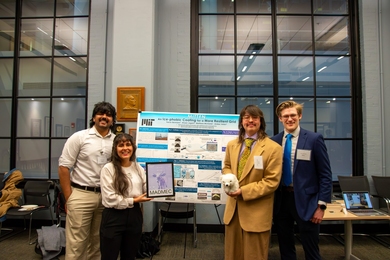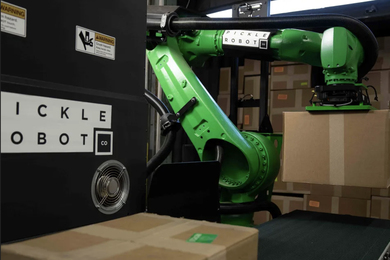The orbiting Chandra Observatory, one of NASA's series of Great Observatories, was featured this week in a collection of highlights from NASA's first five decades that was displayed on Nature magazine's web site.
The U.S. space agency officially turned 50 years old on July 29, and Nature commemorated the event with a series of photographs from 10 historical NASA moments. Along with Chandra, Nature's retrospective featured the original Mercury manned program, the Apollo moon landings, the Viking Mars and Mars rovers missions, and the Hubble space telescope among the other highlights of NASA's accomplishments.
The Chandra X-ray telescope, which studies high-energy radiation from cosmic sources, was launched just more than nine years ago, on July 23, 1999. Of its four main instruments--cameras and spectrographs--two were designed and built at MIT's Kavli Institute for Astrophysics and Space Research (MKI). The science operations center for the observatory is run jointly by the Harvard-Smithsonian Center for Astrophysics and MIT.
"It's great to see Chandra, alongside Hubble and Viking, as one of the major accomplishments in NASA's 50-year history," said Claude Canizares, MIT's associate director for the Chandra project. Canizares is also Bruno Rossi Professor of Physics and Vice President for Research and Associate Provost.
One of Chandra's main instruments, its CCD camera, was built at MIT under the direction of George Ricker, senior research scientist in MKI. One of Chandra's two transmission gratings, used for spectrographic research, was also built at MIT by a team led by Canizares.
The Chandra telescope can take pictures of X-ray emissions from hot, turbulent regions of space that are 25 times sharper than any previous X-ray telescope. It has made detailed studies of black holes, supernovas and dark matter and increased our understanding of the origin, evolution and destiny of the universe.






